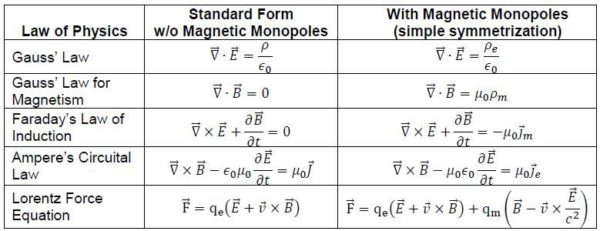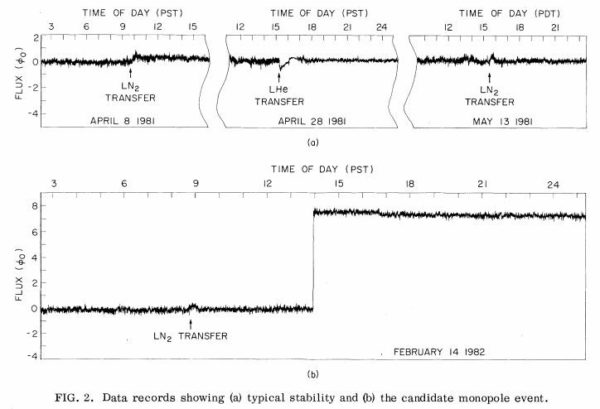“It is possible to commit no mistakes and still lose. That is not a weakness. That is life.” -Jean-Luc Picard
The laws of electromagnetism could have been incredibly different. Our Universe has two types of electric charge (positive and negative) and could have had two types of magnetic pole (north and south), but only the electric charges exist in our Universe. At a fundamental level, between electricity and magnetism, nature is not symmetric.
 The electric/magnetic symmetric version of Maxwell’s equations, where both electric and magnetic sources (and currents) exist. Image credit: Ed Murdock.
The electric/magnetic symmetric version of Maxwell’s equations, where both electric and magnetic sources (and currents) exist. Image credit: Ed Murdock.
But it could have been! Magnetic charges could move and make currents; a changing electric field could induce them; north and south poles could be separated an infinite distance. Magnetic charge could even have been a fundamental property of black holes. In 1982, Blas Cabrera announced the first detection of a long-sought-after magnetic monopole event, and the physics world went crazy.


Blas's candidate event is a really clean signal: just from the plot you show, we can estimate the noise uncertainty as about 0.15 magnetons (full width of baseline is about 0.5, divide by sqrt(12) to get RMS). The systematic error due to the LN2 changes is also less than 0.5. So the candidate signal is 8 +- 0.52, or 15.38 sigma.
That's about as close to "certain" as you can get. That is, it appears to my experience that the signal from the equipment is a real signal corresponding to a physical event, not noise or interference or something. But it's pretty clear from subsequent research that it probably wasn't a magnetic monopole :-(
In the 1982 paper, they used that one candidate to set an upper limit on the flux (assuming it's some sort of unexplained standard physics background) of 6e-10 /cm/s/sr.
Assuming the event is real, the flux rate (1 event in 151 days) is a few orders of magnitude higher than the "Parker Bound" (shown in the figure on the Forbes site) which says that too many monopoles would change the observed galactic magnetic field.
An interesting Nature paper from the following year (1983) suggested that you could circumvent the Parker bound if monopoles formed stable bound states, which would be split by Earth's (or the Sun's) stronger magnetic field.
Unfortunately, the other experiments sensitive to monopoles have all set limits far below the Parker bound, and millions of times smaller than the flux if the Valentine's Day Event were real.
Can you please write about quantum-mechanical monopoles?
http://phys.org/news/2015-04-physicists-quantum-mechanical-monopoles.ht…
The following theory link for photons requires magnetic mono-poles as a result of moving charges:
https://youtu.be/xPmNDQuufqY
at
www.mono-charges.com
https://arxiv.org/pdf/1605.08129v1.pdf
Would the detection of an electroweak monopole bring troubles to theories like quantum-gravity or would it be a great step forwar for it ?